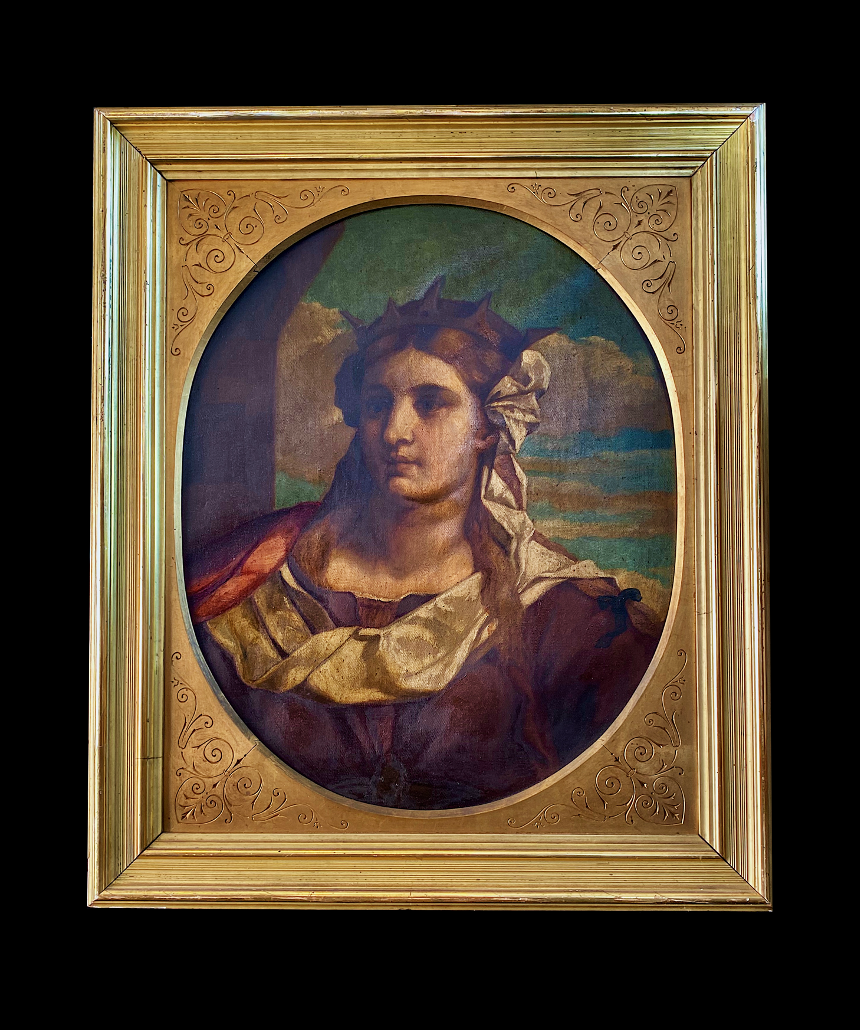

Title: 19th-Century French Antique Victorian Liberty Portrait Oil Painting
Shipping: $29.00
Artist: N/A
Period: 19th Century
History: Art
Origin: Southern Europe > Italy
Condition: Excellent
Item Date: N/A
Item ID: 466
This is a fascinating 19th-Century French Antique Victorian Liberty Portrait Oil Painting on canvas. Framed in an 1800s gold gilded and engraved oval frame. The history of liberty in France is a long and complex one that has evolved over centuries. Liberty was a common motif in 19th-century art. The idea of liberty was closely tied to the political and social movements of the time, including the French Revolution and the struggle for democracy and human rights. This era was marked by great artistic diversity and innovation, with artists exploring a wide range of themes and styles. France has played a leading role in the development of political and philosophical ideas about liberty and human rights and has been at the forefront of many movements that have sought to promote these values throughout history. The idea of liberty first gained prominence in France during the Age of Enlightenment, a period of intellectual and cultural growth that lasted from the late 17th to the late 18th century. The French philosopher Jean-Jacques Rousseau, one of the most influential thinkers of the time, argued that individuals had a natural right to freedom, and that governments existed solely to protect this right. In 1789, the French Revolution broke out, marking a major turning point in the history of liberty in France. The Revolution was driven by a desire to overthrow the absolute monarchy and establish a democratic government based on the principles of liberty, equality, and fraternity. The Revolution also led to the adoption of the Declaration of the Rights of Man and of the Citizen, which proclaimed the inherent rights of all individuals, including the right to liberty. However, the Revolution was also marked by a period of violent turmoil known as the Reign of Terror, during which thousands of people were executed or imprisoned without trial. This period of instability eventually gave way to the rise of Napoleon Bonaparte, who established a new government and introduced a series of reforms that sought to balance individual freedom with the need for strong centralized authority. In the 19th and 20th centuries, France continued to be a leading proponent of liberty and human rights. The French Revolution and the Declaration of the Rights of Man and of the Citizen inspired similar movements around the world, including the American Revolution and the struggle for independence in Latin America. France also played a key role in the establishment of the United Nations and the Universal Declaration of Human Rights, which sought to promote liberty and human rights on a global scale. Today, France remains a democracy committed to the protection of individual liberties, and its history continues to inspire movements and ideas around the world.
The 19th century was a time of great artistic innovation and experimentation in France. It was a period of political upheaval, marked by revolutions, the rise and fall of empires, and the emergence of new artistic movements. One of the most significant movements of the time was Romanticism, which emerged in the late 18th century and continued into the mid-19th century. Romanticism emphasized individualism, emotion, and the sublime, and its influence can be seen in many French paintings of the time. Another important movement was Realism, which emerged in the mid-19th century and rejected the romantic emphasis on imagination and emotion in favor of a more objective depiction of reality. Realist painters sought to represent the world as it really was, often depicting the lives of ordinary people in everyday settings.